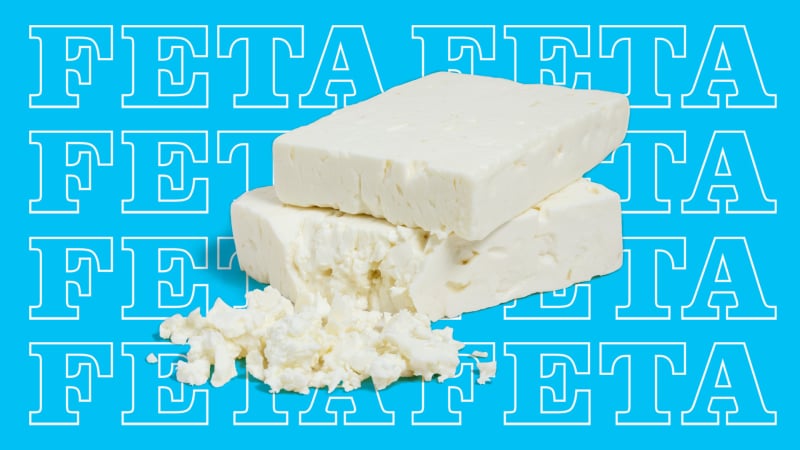In Greece, they take great pride in their local cheeses; as with Italians and "parmesans" from North America, Greeks wouldn't consider many products labeled "feta" in our markets to be worthy of the name. Greece is known for many cheeses, but feta is the most popular and widely known to Americans. If you haven't had the pleasure of enjoying true feta cheese, you're missing out; it is creamy, not squeaky, bright, slightly tangy, and pleasantly briny.
Feta 101: A Deep Dive into the World of Feta
Published Sept. 20, 2022.

Sign up for the Cook's Country Dinner Tonight newsletter
10 ingredients. 45 minutes. Quick, easy, and fresh weeknight recipes.
Feta 101
The name feta derives from the Italian word “fetta,” meaning “to slice.” Technically, the name “feta” should be used only if the cheese is from specific regions in Greece; in practice, cheeses from many countries are labeled as feta. Greek feta is a Protected Designation of Origin product, but most cheesemakers and distributors around the world do not acknowledge it; “feta” has become a generic name for various types of white, crumbly cheese stored in or out of the brine. Real Greek feta must contain a minimum of 70 percent sheep’s milk and no more than 30 percent goat’s milk. We prefer a creamy and bright sheep’s-milk feta for recipes such as our Tiropita and Tiropitakia.
The Best Feta Cheese
After sorting through three different milks, three countries, and eight products, we found what makes the finest feta.Here are some of the cheeses going by the name “feta” that you can find in American markets.
Greek feta
Milk: Sheep’s milk (sometimes with a little goat’s milk)
Flavor and Texture: Lemony, briny, creamy, light, milky
French feta
Milk: Mostly sheep’s milk
Flavor and Texture: Mild, slightly creamy, salty, slightly tangy
Bulgarian feta (sirene)
Milk: Mostly sheep’s milk but not highly regulated and can contain cow’s milk as well.
Flavor and Texture: Yeasty, grassy, soft, creamy, wet
American feta
Milk: Mostly cow’s milk (can be made with small percentages of sheep’s milk and goat’s milk)
Flavor and Texture: Squeaky, dry, crumbly, very salty, sour, mild
Because French and Bulgarian fetas are made with mostly sheep’s milk, they are most similar to Greek feta and make good substitutes for it.

